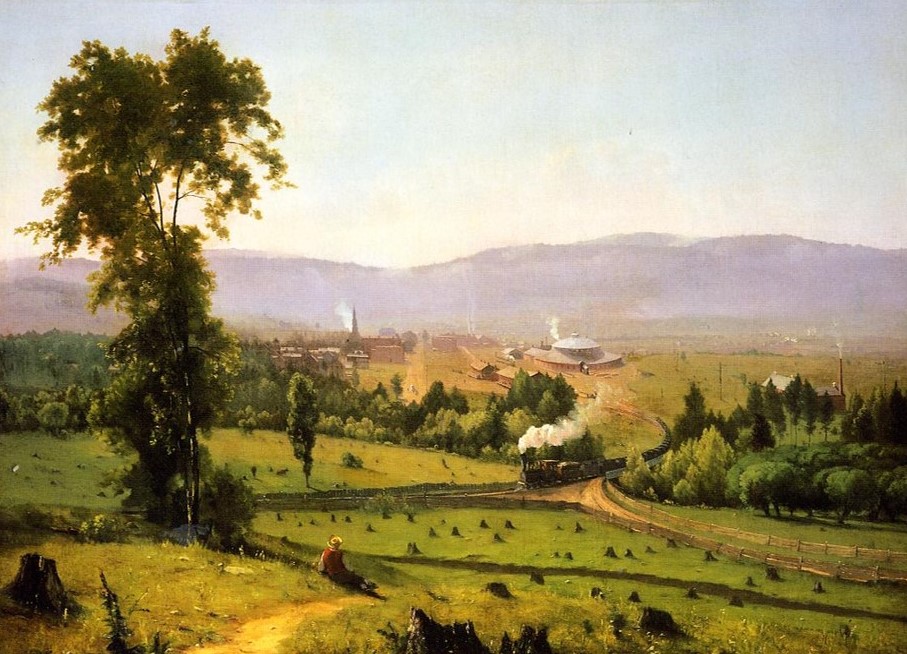Literary and Cultural Studies
– Cultural Studies
Das Quellen- und Literaturverzeichnis zu dieser Seite finden Sie hier.
Aufgabe 1 von 2
CULTURAL STUDIES: VISUAL CULTURE (AMERICAN LANDSCAPE PAINTING)
Have a look at George Innes’s painting The Lackawanna Valley (1855).

Copyright: Public Domain / Quelle: National Gallery of Art
This is what the critic Leo Marx writes about it in his book The Machine in the Garden: Technology and the Pastoral Idea in America (2000 [1964]: 220-221):
"In 1854 (…) the Lackawanna Rail-road Company commissioned Inness to paint the scene of its operations. At first, apparently, the assignment repelled him. Hitherto a painter of pleasant, but on the whole conventionally romantic, landscapes, Inness was put off by the notion of painting anything as devoid of visual charm as a repair shop, a roundhouse, or a smoking locomotive. He did not see how such objects could be assimilated to his habitual Virgilian mode. But as it happens the difficulty proved to be stimulating, and the result, The Lackawanna Valley (1855), is generally included among his best works. It is a striking representation of the idea that machine technology is a proper part of the landscape. Like Thoreau's extended metaphor at the end of Walden, the springtime thawing of the sand in the railroad bank, Inness's painting seems to say that "there is nothing inorganic." Instead of causing disharmony, the train is a unifying device. The hills in the background and the trees of the middle distance gently envelop the industrial buildings and artifacts. No sharp lines set off the man-made from the natural terrain. Nor is the Lackawanna's smoke unpleasant. The cottony puffs that rise from the engine and the roundhouse are merely duplicates of a puff that rises from behind the church - an ingenious touch! Instead of cutting the space into sharp, rectilinear segments as railroad tracks often do, the right-of-way curves gracefully across the center of the canvas where it divides in two, forming the delicately touching ovals that dominate the middle plane. It is noteworthy, too, that the animals in the pasture continue to graze or rest peacefully as the tidy, diminutive train approaches. Still, this is not a lament for Goldsmith's cherished land; the stumps indicate that the pasture has just been hewn out of a wilderness. But, of course, it is the solitary figure reclining beneath the dominant vertical, the tree in the foreground, who finally establishes the quiet, relaxed mood. He holds no crook, but he contemplates the sight in the serene posture of the good shepherd looking out across Arcadia."
This careful reading of the painting is meant to support a central thesis. Which of the following sentences captures this thesis best?
While taking in sentences 1 and 2, Marx‘ argument certainly revolves around sentence 3, as the title of his book also indicates. Sentence 4 cannot be found in the text, but it would certainly provide an angle for reading both the painting and Marx against current concerns.
